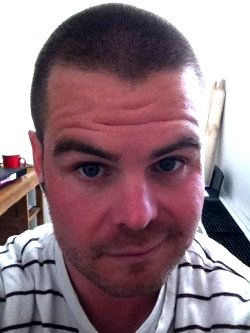is currently working as a postdoctoral research associate at the Water Policy Collaborative, Department of Civil and Environmental Engineering, A. James Clark School of Engineering, University of Maryland, College Park. His project, funded through a grant administered by USGS, and in collaboration with the Institute for Water Resources, U.S. Army Corps of Engineers. The project focuses on strategic water resources planning and development in the U.S. during the middle decades of the 20th century.
Jeffrey Brideau

Ph.D. CandidateDepartment of HistoryUniversity of Maryland
A Bond Rather than a Barrier: Constructing the St. Lawrence Seaway, An Environmental History
Abstract: By any metric, the St. Lawrence Seaway is a marvel of 20th century engineering. Completed in 1959, it unified several discrete elements into a coherent technological system, facilitating navigation and the production of hydroelectricity. Moreover, it is perceived as a manifestation of the amicable relationship between Canada and the United States, becoming a trope for transnational cooperation. The Seaway has become a technological black-box, which this study opens. In addition to the project’s merits, I explore the people, values, and practices marginalized or transformed by the Seaway project and discourse. The Seaway inexorably transformed the river and adjacent landscape, and, I contend, exercised further transformative power. This study shows that the reordering of the St. Lawrence concomitantly and reciprocally reordered people’s relationships to the river, and with one another. By teasing out the values concealed by the dominant Seaway discourse, this project will show that as we reconstruct rivers, we reconstruct ourselves.
Updates
Brideau successfully defended his Ph.D. dissertation, "A Bond Rather Than A Barrier? Constructing the St. Lawrence Seaway," at the University of Maryland in May 2014. He now holds a postdoctoral research fellowship at the Institute for Water Resources, at the United States Army Corps of Engineers Headquarters in Alexandria, VA. He will also be teaching in the STS program at Virginia Tech for spring 2015.